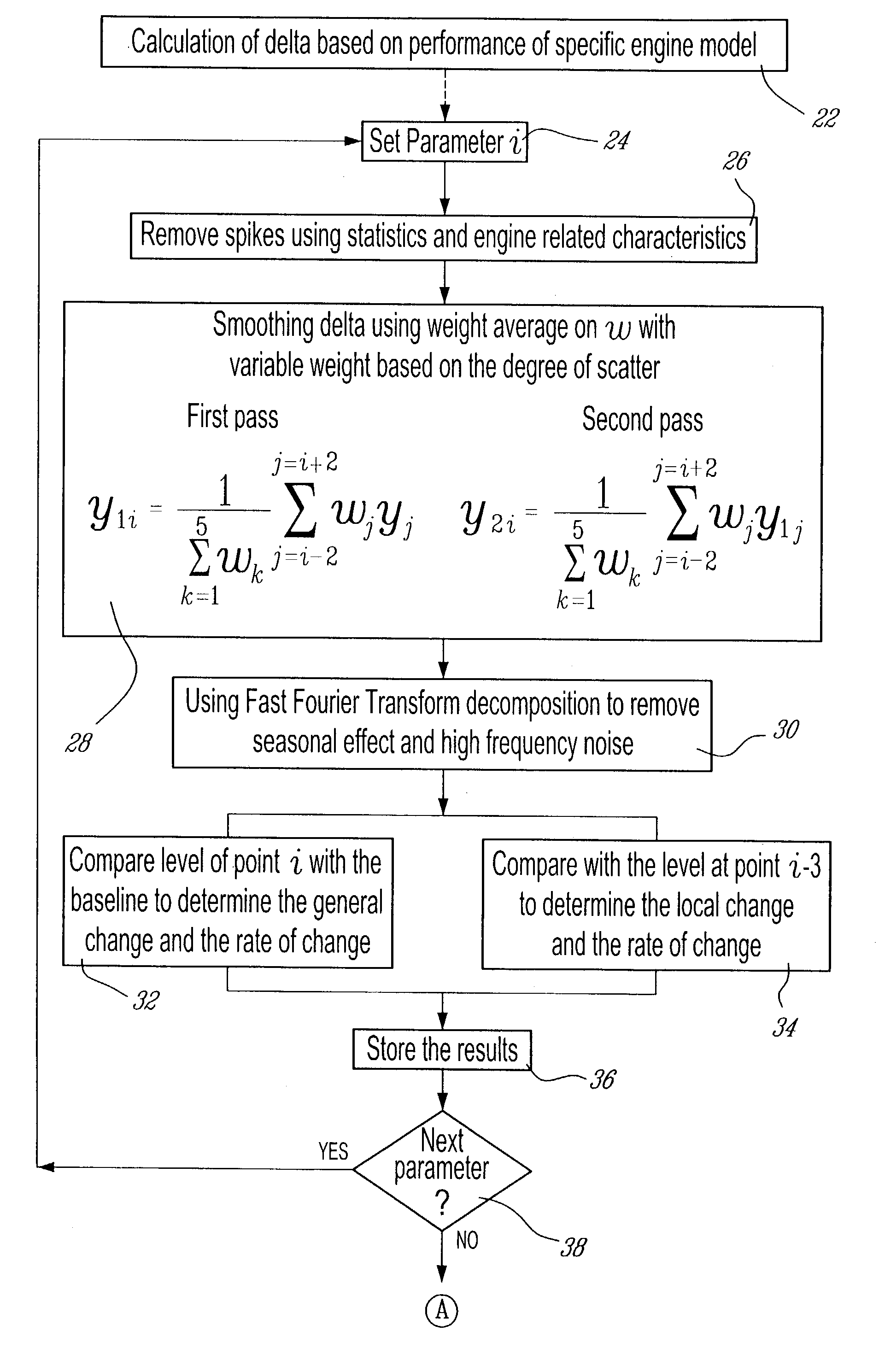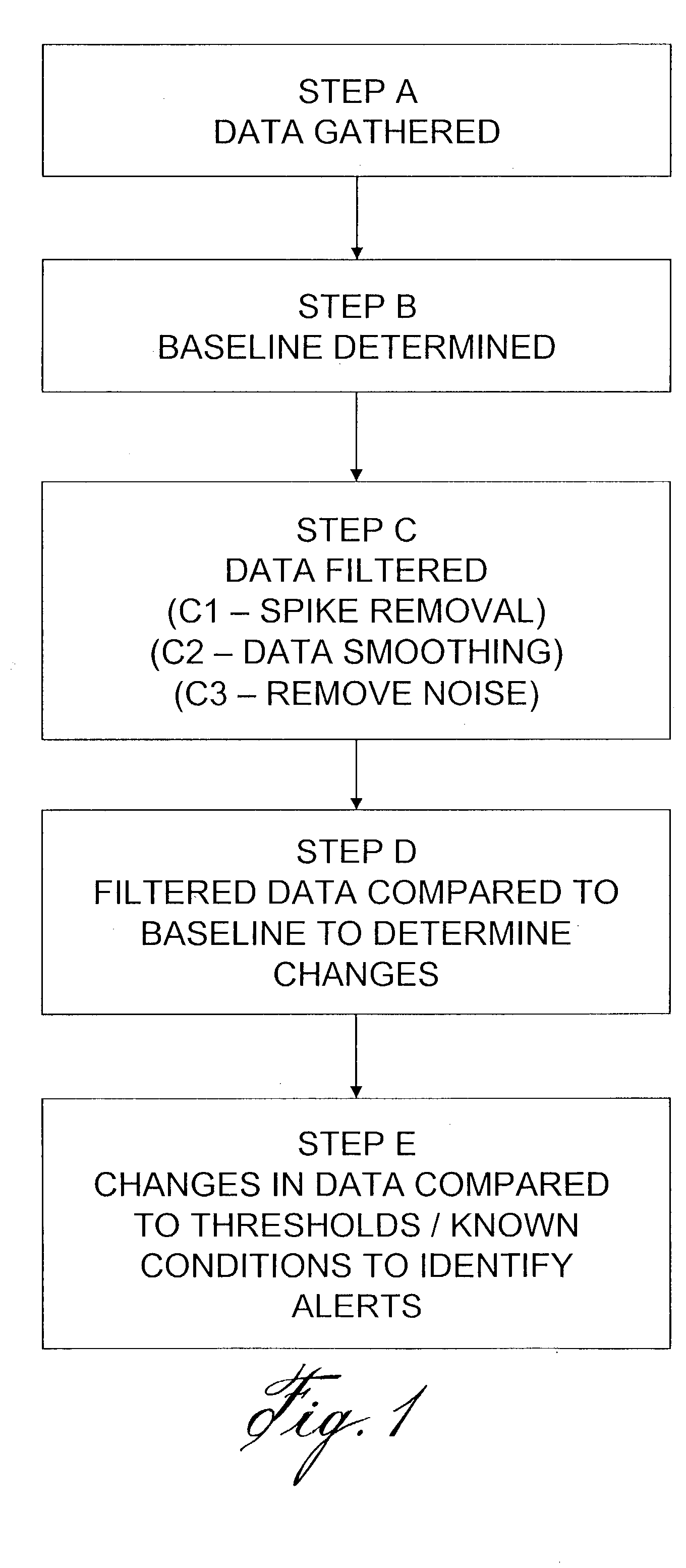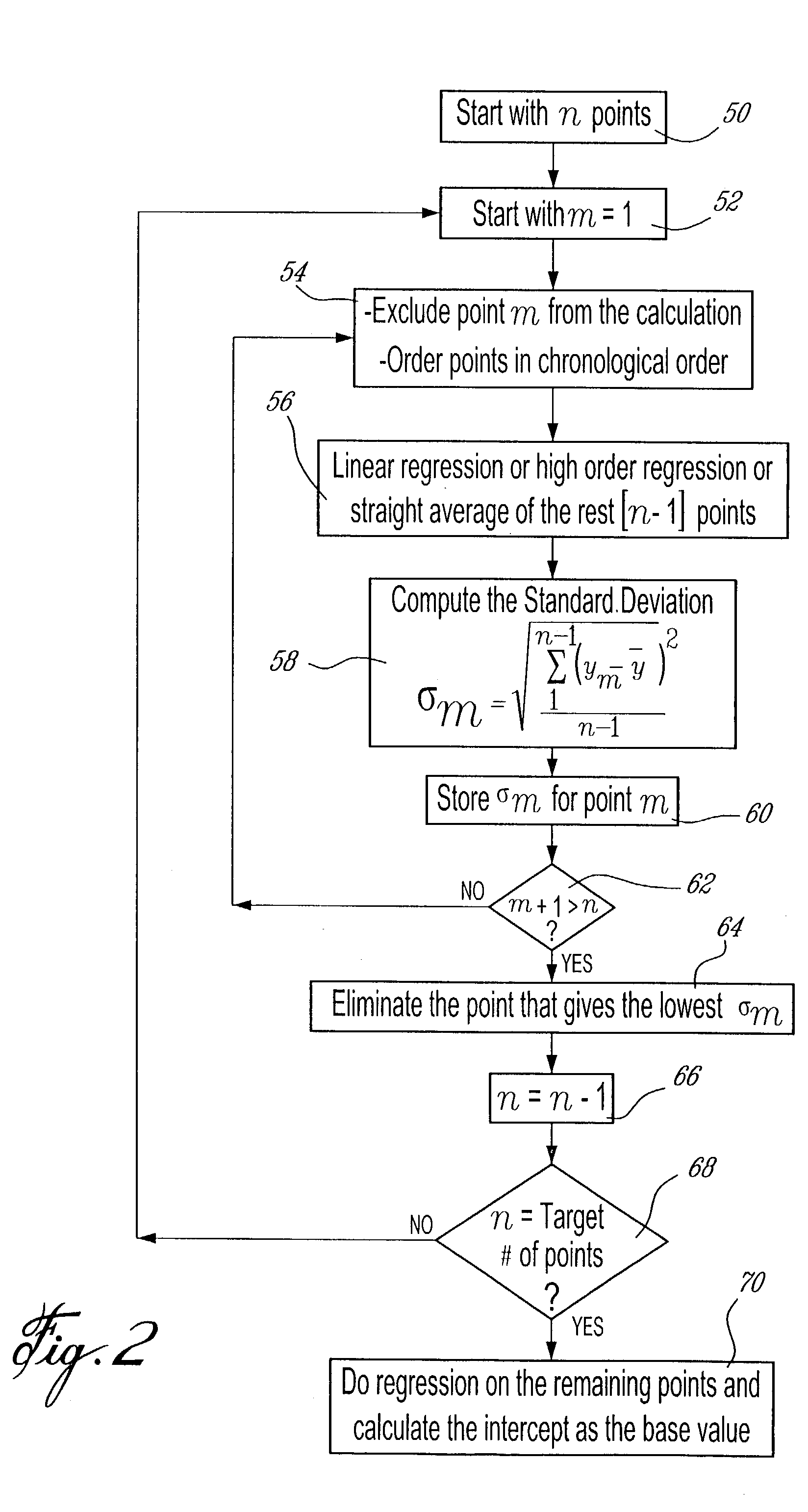Method and system for trend detection and analysis
a trend detection and analysis technology, applied in the field of trend detection and analysis in data, can solve the problems of reducing the confidence of operators or service technicians, conventional data analysis methods, and large number of false alerts, so as to diminish and reduce the effect of extraneous data points
- Summary
- Abstract
- Description
- Claims
- Application Information
AI Technical Summary
Benefits of technology
Problems solved by technology
Method used
Image
Examples
Embodiment Construction
[0029]The present invention relates to a technique for analyzing trends in data. In the particular embodiment described, the data is typical gas turbine engine performance data of the general type displayed graphically in FIGS. 5 and 6, and which may typically include measured parameters such as compressor speed (NL for low pressure compressor and NH for high pressure compressor), inter-turbine temperature (ITT), fuel flow (WF), main oil pressure and temperature (MOP and MOT, respectively), etc. However, it will be understood by one skilled in the art that the data could come from any source if proper parameters are chosen and appropriate knowledge databases are used as necessary.
[0030]The described embodiment relates generally to a gas turbine engine performance parameter trend detection and analyzer method and system as depicted in overview in FIG. 1. Each step will be described briefly here, and in more detail below. In Step A, engine performance data is gathered (in any suitable...
PUM
 Login to View More
Login to View More Abstract
Description
Claims
Application Information
 Login to View More
Login to View More - R&D
- Intellectual Property
- Life Sciences
- Materials
- Tech Scout
- Unparalleled Data Quality
- Higher Quality Content
- 60% Fewer Hallucinations
Browse by: Latest US Patents, China's latest patents, Technical Efficacy Thesaurus, Application Domain, Technology Topic, Popular Technical Reports.
© 2025 PatSnap. All rights reserved.Legal|Privacy policy|Modern Slavery Act Transparency Statement|Sitemap|About US| Contact US: help@patsnap.com



